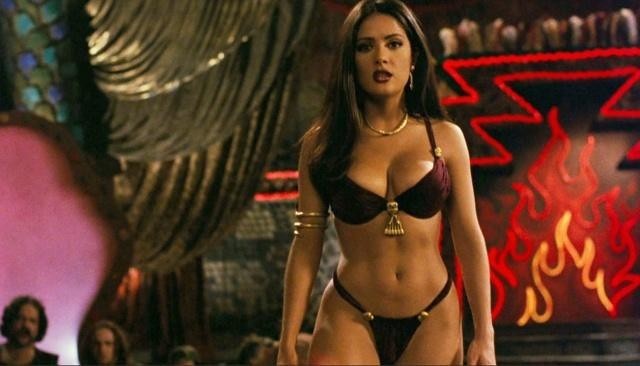Scream (Marco Beltrami, 1996)
The backbone of Marco Beltrami’s muscular, dynamic slasher movie score is the theme for Sidney, as played in a star-making turn by Neve Campbell. The haunting choral lament weaves its way throughout Wes Craven’s delightfully self-referential horror (as well as its three sequels), lending a haunting sense of tragic melancholy to the central character. Not just a score equipped with all manner of frightening bells and whistles, Beltrami’s score also contains a great deal of sensitivity and compassion.
House on Haunted Hill (Don Davis, 1999)
A composer sadly ill-utilized today, Davis exploded onto the scoring scene with his radical trilogy of Matrix scores. However his work for this schlocky, gory horror remake is their equal in terms of instrumental complexity and avant-garde techniques, particularly in the vocal selections which erupt at the listener in all manner of piercing, shrieking ways. The genuinely alarming introductory track ‘Pencil Neck’ sees the choir being pushed to vicious extremes, a gleefully malicious celebration of all things evil.
https://www.youtube.com/watch?v=GzP2qQ7V3ss
Hannibal (Hans Zimmer, 2001)
As alluring as the nighttime streets of Florence, as enticing as a baroque recital conducted by Dr. Lecter, Zimmer’s atmospheric, Gothic score isn’t so much scary as quietly foreboding. In particular the composer’s use of choir is akin to a chill down the neck, often mixing at the lowest registers with bells, strings and synthetic enhancements to creative an expansive depiction of the infamous Hannibal’s favourite Renaissance city.
https://www.youtube.com/watch?v=fLnpAMujbDc
Drag Me to Hell (Christopher Young, 2009)
Sam Raimi’s ghoulish tale of a cursed banker haunted by a demon is a pure fun house thrill-ride. And it allowed Young to go off the leash with his characteristic, lavish musical approach, the composer’s soaring, forceful use of choir acting as a celebration of why we love scary movies. Ranging from operatic expressions to shrill dissonance, the vocals mix with the churning orchestra superbly to drag us down to hell along with Alison Lohman’s central character.
Get Out (Michael Abels, 2017)
Most inventive use of a choir in recent memory? It’s hard to deny Abels’ achievement with this, his gloriously witty and eerie score for Jordan Peele’s sensational horror-satire. The soundtrack is centred around the vocal ‘Sikiliza Kwa Wahenga’ piece, a Swahili theme whose title translates to, ‘Listen to your ancestors’ whilst the lyrics broadly translate as ‘something bad is coming… run’. It’s a fabulous example of how music can enhance and enrich the subtext of a movie, a spooky, ancestral warning calling out to Daniel Kaluuya’s main character as he faces a liberal, racist nightmare of gargantuan proportions.
https://www.youtube.com/watch?v=oAaU37YZY5E
A Cure for Wellness (Benjamin Wallfisch, 2017)
Wallfisch and director Gore Verbinski began work on the score for this lavish Gothic horror opus well before filming began, a clear indicator that Verbinski, whatever his flaws, is a filmmaker who prioritises music. The ear-worming nature of the main vocal theme for Mia Goth’s character Hannah is one of those classic teasing tracks, simultaneously drawing us further into danger whilst also warning us away. Its eventual translation into bombastic waltz territory is further confirmation of Wallfisch’s standing as one of our finest contemporary horror composers.
Sean Wilson is a writer, journalist and soundtrack enthusiast and can be found on Twitter here.












